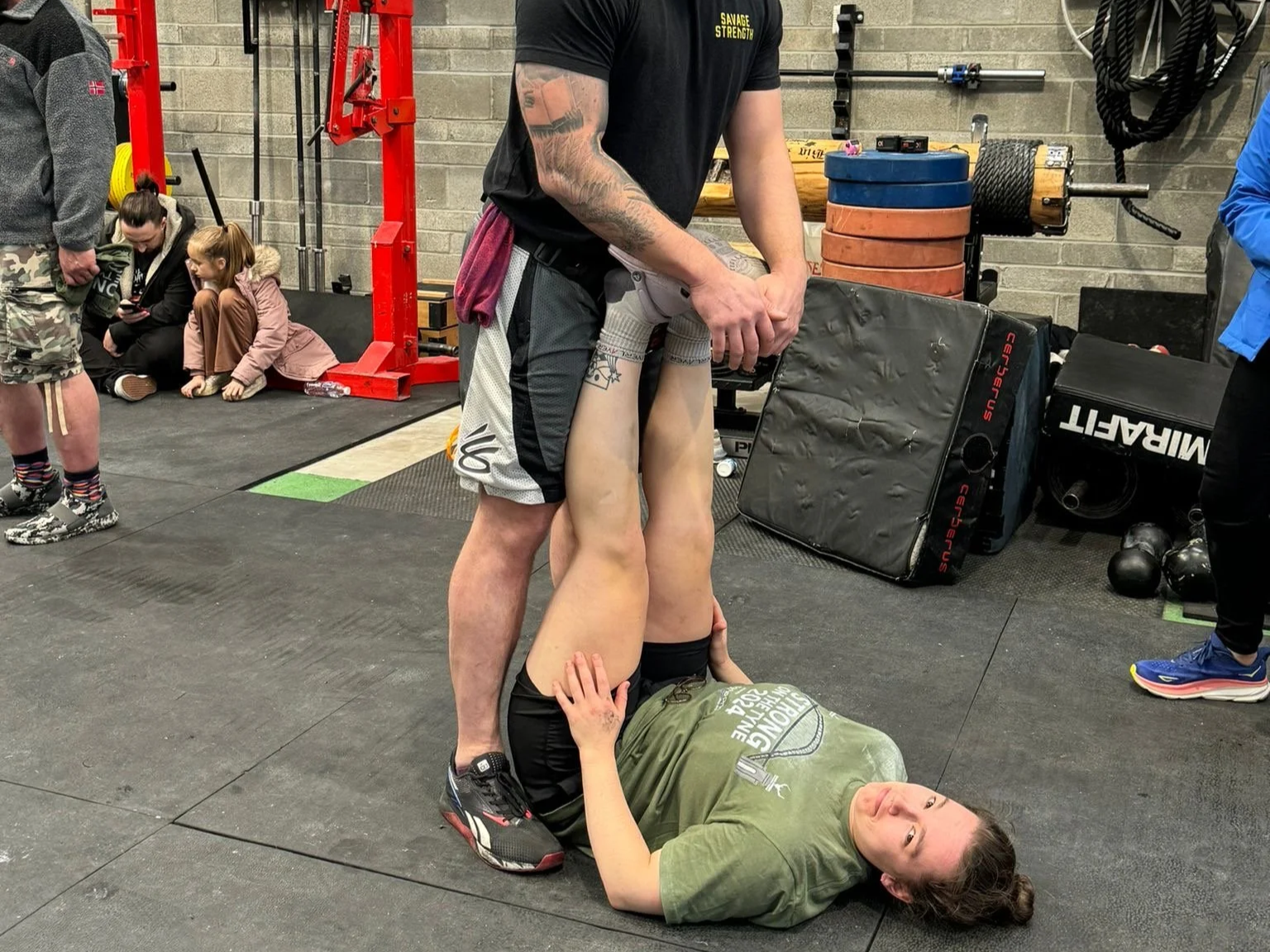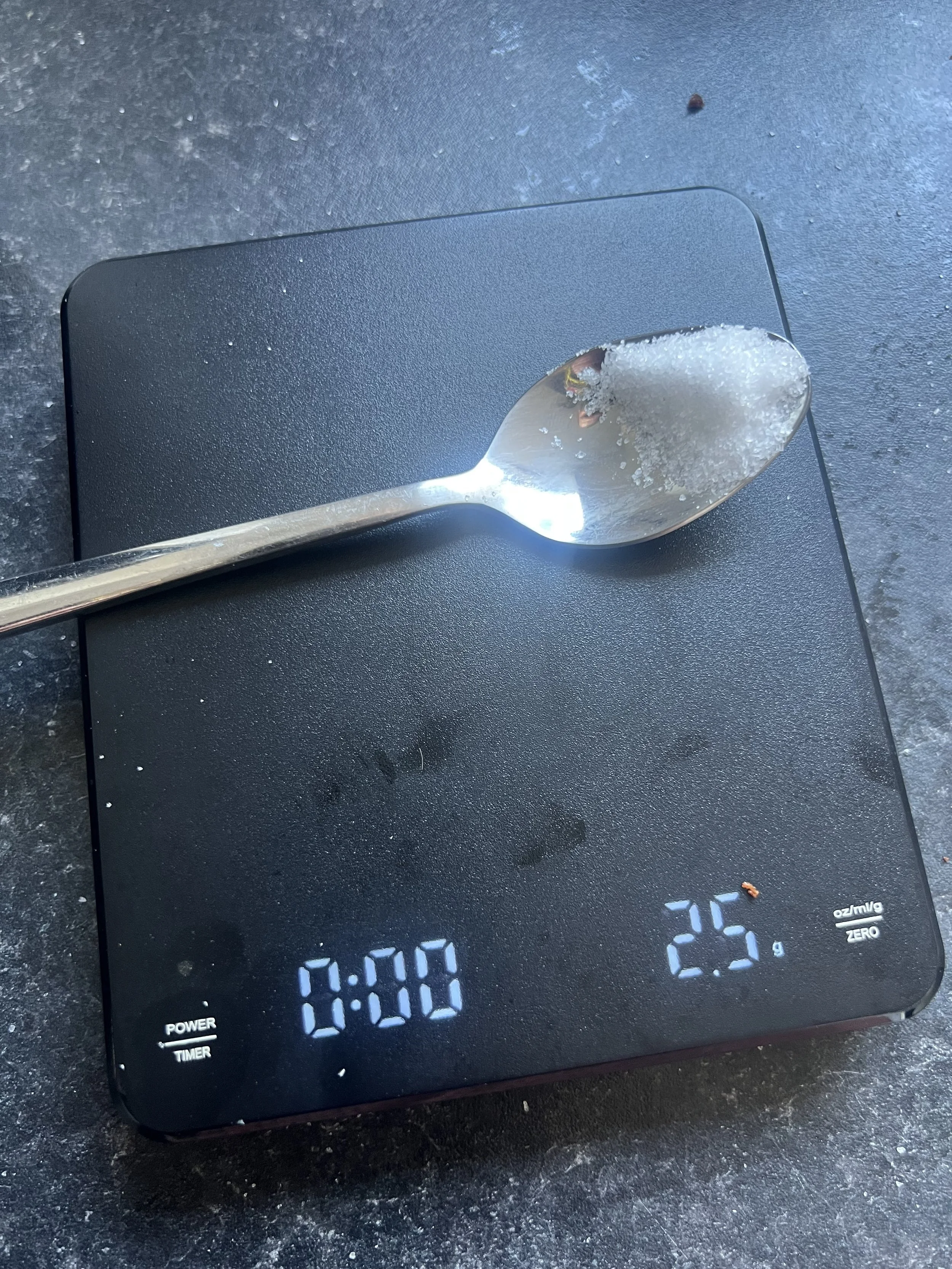
Performance Article
Cramps…
and why salt won’t save you from shitty conditioning
Cramps can kill your performance in seconds. One minute you're smashing a workout or deep in competition, the next your calf or hamstring locks up and leaves you on the floor.
One of the most common "fixes"? Salt. But does it actually work?
Let’s break it down.
Author: Adam Johnston
Reading Time: 5to 6 mins
Date: 7th August 2025
Tags: #Cramps, #Salt, #Electrolytes, #Hydration, #Recovery, #Conditioning, #Strength #Training
Key Points:
Salt helps if cramps are caused by sodium loss, but only when paired with water
Most cramps come from poor conditioning or muscle fatigue, not salt deficiency
Sodium is just one piece of the electrolyte puzzle
Resistance training helps prevent single muscle cramping long term
A banana smoothie with milk + salt covers many bases.
Why Cramps Happen?
There’s no single cause of cramps and it’s often a messy mix.
The most common culprits?
1. Dehydration or Electrolyte Imbalance
Your body loses fluid and electrolytes (mainly sodium) through sweat. If you don’t replace them, especially during long or intense sessions, your muscles become more prone to cramping.
This is the one scenario where salt actually helps, but only if it’s taken with water. Sodium helps regulate fluid balance and nerve signals, so if levels drop too low, muscle function gets disrupted.
Key sign: Cramping affects multiple muscle groups at once (e.g. hands, feet, calves, torso), especially in hot or high output conditions like long distance events or intense training sessions.
Important: Salt by itself doesn’t solve the issue in fact, it can make it worse. You need fluid and sodium for proper rehydration and muscle function… So don’t fucking dry scoop it.
2. Neuromuscular Fatigue
This is about how long and hard a specific muscle has been working.
Think high reps, extended sets, or repeated use of a muscle that isn't fully recovered. The nervous system starts to lose coordination, and the muscle misfires resulting in a cramp.
Key sign: Cramp hits during or right after heavy use of one muscle group (e.g. hamstrings after hill sprints or nordics)
3. Poor Conditioning
This is about your overall fitness, the body's ability to deliver oxygen, clear waste products, and sustain work. If you're deconditioned, your muscles fatigue faster and more often.
You might be active, but if you’re not building base capacity (strength, aerobic fitness, movement efficiency), cramping becomes a regular visitor.
Key sign: Cramping during sports or high-effort tasks you don’t regularly train for
4. Prolonged Tension
This is more positional and nervous system-related. Holding stretched or contracted positions under load especially near end range causes intense neural demand. Even well-conditioned athletes can cramp here.
Examples:
Deep pause squats
Isometric holds (e.g. plank, lunge, wall sit)
Defensive positions in sports
Key sign: Cramping while holding or exiting a position, not necessarily under high reps or long sets
Salt Helps, But Only if You Do It Right
Yes, salt can help, but only when used properly. Salt without water?
Can dehydrate you more
May spike blood pressure
Might upset your gut (bloating, nausea, stomach cramps)
Will stress your kidneys
If you're going to use salt, get the dose and context right.
2.5g of table salt per litre of water is the target to aim for.
That gives you, 1000mg of sodium, a good rehydration level for heavy sweaters.
Best used during or after long, sweaty sessions. Think hot gym sessions, football matches, long runs.
If you’re not keen on salty water? Salt your food. Eat salty snacks. But hydrate properly alongside.
It’s Not Just About Sodium
Sodium matters, but it’s not the only player. If you’re sweating hard, you also need:
Potassium (helps muscles contract and relax)
Magnesium (supports nerve function and recovery)
Calcium (regulates muscle contractions)
Low on any of these, and cramps are back on the table, so how much do you need?
Per litre of fluid, aim for:
Sodium 800–1500 mg - Salt, electrolytes
Potassium 200–400 mg - Bananas, potatoes, coconut water
Magnesium 100–200 mg - Magnesium supps, greens
Calcium 100–200 mg - Dairy, fortified foods
If your diet’s shit and you’re sweating lots, you’re losing all of these.
The best fix? Whole foods and some common sense.
You don’t need to track obsessively. But you do need to replace what you’re losing, especially if you’re training long, sweating hard or eating light (e.g. dieting or weight cuts).
DIY options That Work
Electrolyte tablets are an option but come at a cost and 2.5g of salt in your litre of water isn’t exactly the most palatable, so below are two extra options that might taste a little better.
Option 1:
1 litre of water
2g sea salt
200mg magnesium (glycinate or citrate)
Dash of fresh orange juice (for potassium + taste)
That’s a full-body cramp prevention plan in a bottle thats cheap & effective.
Option 2:
1x large ripe banana (potassium + magnesium)
300–500ml milk (calcium + fluid + a bit of sodium)
A pinch of salt (sodium — ~0.5g)
Again… Cheap and effective.
Just don’t drink it too close to training unless you want it to say hello again.
They’re not Instagram pretty, but they work.
Kind of like my coaching.
The Long-Term Fix: Get Stronger
If you’re cramping in one muscle and not the whole body, it’s probably not a salt issue and can be taken as a sign that it’s a conditioning issue.
That hamstring that cramps after sprints?
That calf that seizes mid-jump?
They’re not strong or fit enough to do the job you’re demanding of them.
Your solution:
Add resistance training
Especially for the muscles that give out
Just 2–3 sessions a week can be game-changing
Practical Application & Takeaways
If you're cramping across multiple muscles? Rehydrate and get electrolytes in, especially sodium.
If it’s one muscle? Train it. Build strength and endurance in that area.
Don’t rely on salt alone. Balance it with fluids and other electrolytes.
Use real food when you can: smoothies, salty snacks, bananas, milk.
Think of cramps as feedback, not failure. They're telling you where you’re underprepared.
Final Thoughts
Salt isn’t magic. It’s one tool in the box. If you sweat heavily, don’t eat well, and skip training, yeah, you’re going to cramp.
But if you eat like an athlete, hydrate well, and train properly, you’ll cut your risk massively… And you won’t need to panic chug salt mid game or set.
About the author
Adam is a strength coach and the Head Coach of Savage Strength.
He helps lifters get brutally strong through simple, effective training with a speciality in Olympic Weightlifting and Strongman.
If you want coaching tailored to you and your goals, let’s get started with personalised programming designed to get you stronger.





